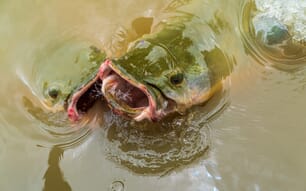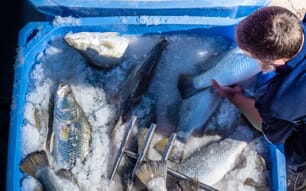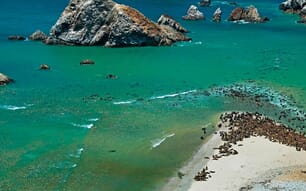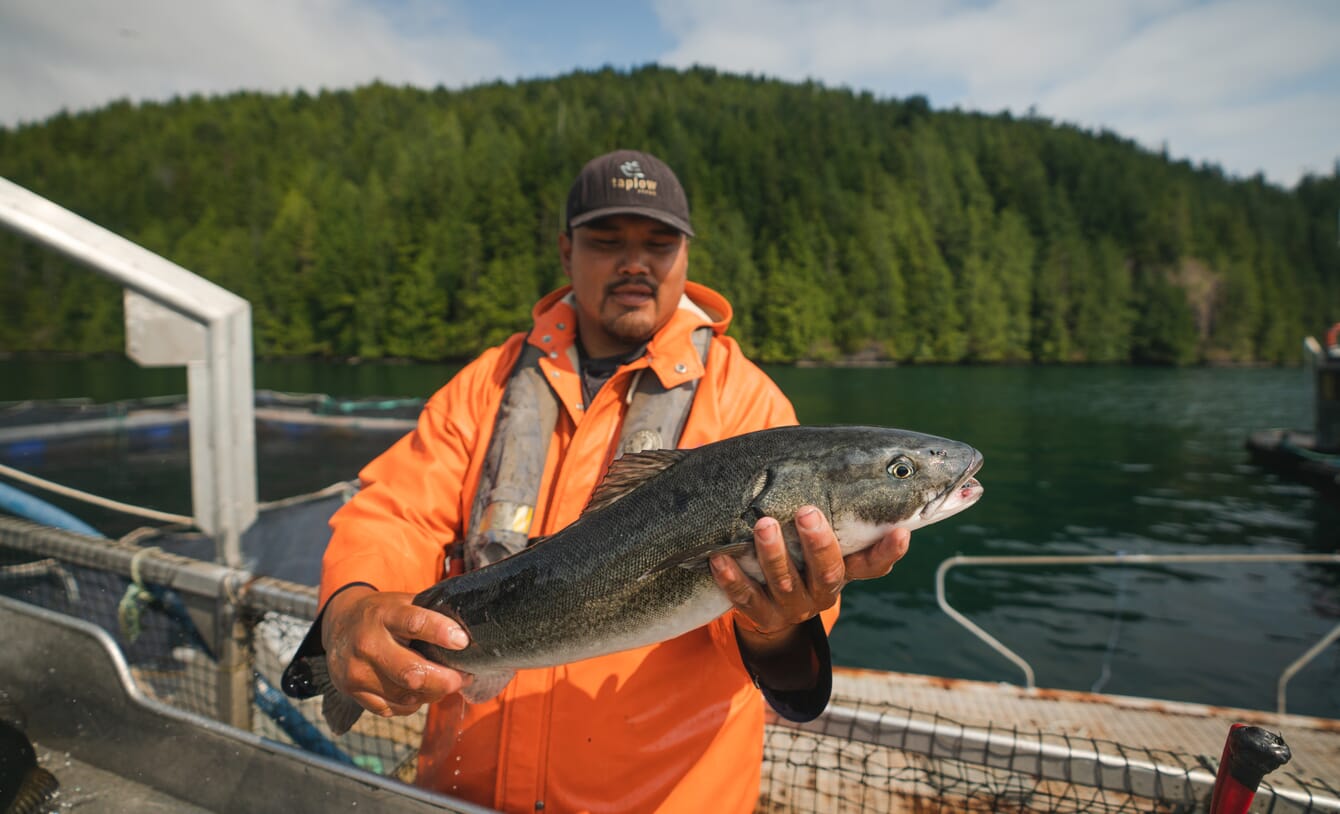
© Golden Eagle Sablefish
The sablefish (Anoplopoma fimbria) is found in deep waters of the northern Pacific basin, from Japan to Baja California. Also known as black cod, the sablefish resembles a cod but it is not related. The commercial sablefish fishery uses longlines, deepwater trawls and bottom-resting traps (pots).
North American sablefish stocks and landings have declined steadily and quite significantly over the past three decades, but sablefish demand and consumer recognition are steadily increasing globally, thanks to its use by celebrity chefs and high-end sushi restaurants. Japan has long been the major market for sablefish, but it has caught on elsewhere as an alternative to Chilean seabass, which has also experienced dwindling supplies in recent years.
Early attempts at aquaculture
In the 1960s, researchers at Canada’s Pacific Biological Station successfully raised wild-caught sablefish juveniles, but it soon became obvious that, as is the case with so many aquatic species, sustainable culture would require reliable supplies of hatchery-reared fingerlings. Canadian researchers eventually worked out methods for captive spawning and larval rearing, and by the late 1990s fingerlings were available from several sources in British Columbia. Following the first commercial harvest of farmed sablefish in 2002, a gold rush mentality led to substantial interest and investments in sablefish culture, centered along the west coast of Vancouver Island.
A number of unresolved constraints in the production cycle, especially difficulties with broodstock availability, larval survival and an extended larval period, resulted in the general decline of what was initially seen as a promising new sector. Consolidation of the most successful operations occurred in the late 2000s and early 2010s. And, while some industry observers wrote off sablefish aquaculture, that prognosis appears to have been premature.

Research suggests that a rearing temperature of 15 degrees centigrade results in better growth than at 12 degrees centigrade – but, although higher temperatures can accelerate growth even more, they tend to result in reduced survival © Golden Eagle Sablefish
How it’s grown
The hatchery phase has historically been a major constraint to commercialisation, but some sablefish hatcheries have been successful. Expertise is required in broodstock maintenance and spawning, larval feeds and rearing, biosecurity and control over environmental temperatures and lighting.
Broodstock are collected from open water during the late summer and autumn, often using longlines, and held for maturation prior to spawning the following winter and spring. Since mature fish are normally found in deep water habitats, broodstock are maintained at cold temperatures with reduced light. Females’ reproductive development is evaluated using ultrasound, and hormone implants are employed to encourage final maturation. Fecundity can reach 250,000 or more eggs, a factor which may help bring down costs per individual fingerling as the industry advances. Photoperiod manipulation has been used to accelerate or delay spawning, and this will also be important in commercial operations, allowing fingerlings to be available to growers throughout the year. Incubation at 5-6o C takes 12 to 14 days, and another 30 days are required for yolk sac absorption.
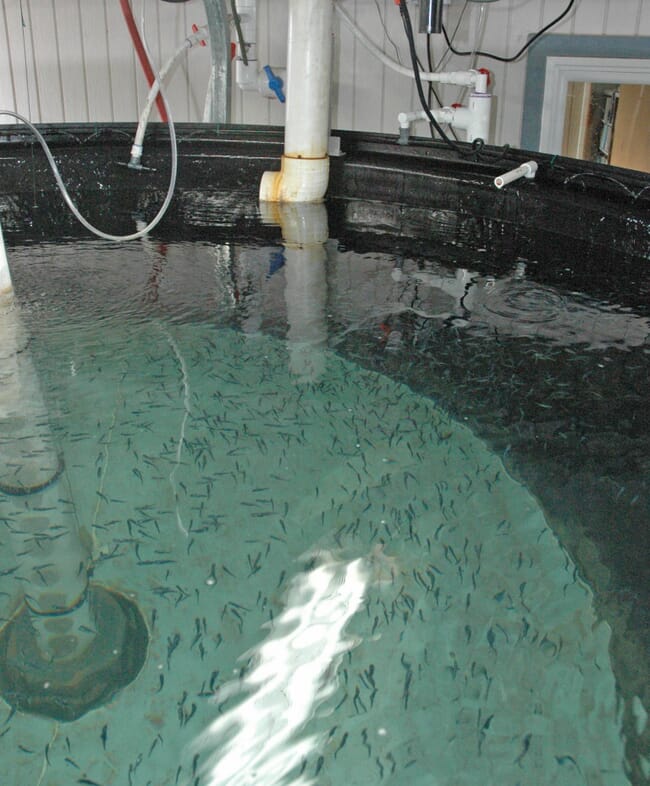
Grow-out to market sizes of 1.8 to 3.6 kg has been successful with sablefish grown in both RAS facilities and net pens © NOAA
Once fry are ready to feed, they are transferred to tanks with algal paste and enriched rotifers, and the water temperature is increased to 10o C or slightly higher. One function of the algae is to provide background colouring, so larvae can more easily view their prey, and over the past few years the algae has successfully been replaced with clay suspensions that serve the same purpose at a much lower cost. Light levels are initially low, but gradually increased (as is temperature) as the larvae grow. During this time fry are transitioned from a rotifer-based diet to Artemia and eventually weaned onto formulated diets. Larval survival typically ranges from 10 percent to 40 percent. Research suggests that a rearing temperature of 15o C results in better growth than at 12o C, but although higher temperatures can accelerate growth even more, they tend to result in reduced survival.
Size grading at this time is important, in order to minimise losses caused by cannibalism during the nursery phase. Fingerlings typically reach 75 g around 200 days after eggs are spawned. Grow-out to market sizes of 1.8 to 3.6 kg has been successful in both net pens and RAS facilities, with harvests at approximately two years of age. A range of FCRs has been reported for sablefish grow-out in both production strategies, from 1.1 to 1.6, but a more typical value may emerge as the industry becomes more standardised. Commercially available salmon feeds are well received by sablefish, but some producers make their own feed in-house.
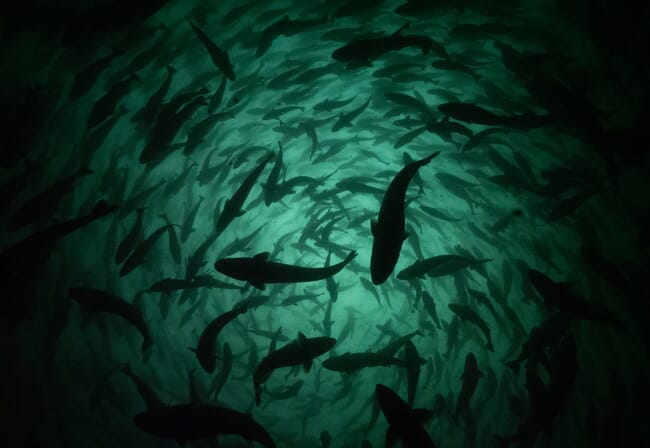
© Golden Eagle Sablefish
Research updates
As with any new aquaculture species, a significant investment of time and money has been required to develop production methods, with contributions from researchers and private industry.
Rubi et al. (2021) presented findings suggesting that selective breeding could significantly improve sablefish hatchery survival. From an original broodstock group of 12 females and 6 males, they found that after 12 months of culture 90 percent of the surviving offspring had been produced by only five females and 93 percent were sired by only three males. Other studies suggest that larval temperature optima may also be influenced by genetic effects.
And, like many other teleost fishes, sablefish have an XX(female) / XY(male) sex determination system. Since female sablefish exhibit better growth, scientists have used the technique of masculinising female fish at a very early age (through hormone treatment) to produce “neomales”, which are genetically female but phenotypically male. When crossed with normal females, these fish can produce hormone-free all-female offspring. Overall growth increases of 10 to 12 percent are typical when raising all-female sablefish. The sex reversal techniques are not complicated, and once expertise is acquired production of neomales is not a significant cost on a per-fish basis, due to the high fecundity of the species.
A number of nutritional studies have been conducted with sablefish over the past decade. Neylan et al. (2024) found that inclusion of the microalga Schizochytrium in fish-free sablefish diets can increase fillet polyunsaturated fatty acid (PUFA) levels without significant reductions in growth or health indices. Johnson et al. (2020) found that taurine supplementation in plant-based feeds improved growth, feed efficiency and protein retention in juvenile sablefish. And Nicklason et al.reported that sablefish growth was highest when using heated soya beans and soy protein concentrate as plant protein sources, with the former resulting in significant cost savings.
When I asked Dr Ken Cain, from NOAA Fisheries, for his perspectives on current and future sablefish research he noted: “A couple of primary areas or research that we are addressing or need to be addressed are disease prevention (developing new atypical furunculosis vaccines for sablefish) and achieving consistent captive spawning of wild caught and/or F1 broodstock. Other areas that are important include streamlining larval production and reducing the cost of live feeding prior to weaning onto commercial diets. Production of all females has been successful and has been shown to result in faster growth compared to mixed-sex groups. We are currently comparing growth in land-based (flow through and RAS) with net-pen production of sablefish and hoping to explore other markets (e.g. live market) that could be targeted and expanded.”
Resistance from commercial fishers
The commercial fishery has expressed concerns over sablefish aquaculture for a number of years – primarily focused on potential supply-and-demand price impacts. One concern is that when culture methods are refined and become easily adopted, producers will establish operations in lower-cost countries. Both Mexico and South Korea could potentially develop sablefish aquaculture, and China is already pursuing research on sablefish production and disease management.
Wild harvesters in the US and Canada have emphasised potential negative environmental impacts of sablefish aquaculture in order to generate public support. Recently, however, the wild fishery has been facing bigger problems, related to environmental issues. In 2021 the US National Marine Fisheries Service (NMFS) issued an incidental take permit for humpback whales to the West Coast sablefish fishery. The Center for Biological Diversity (CBD) subsequently filed suit against the agency, citing failure to uphold provisions of the Marine Mammal Protection Act. In March of 2023, a federal court In California instructed NMFS to develop a plan to reduce the possibility of humpback whales becoming entangled in the vertical lines attached to the pots commonly used by commercial fishermen targeting sablefish.
And in January of this year, the CBD filed a second suit against NMFS, based on failure to protect sea turtles and their critical habitat against negative impacts, including entanglement, from the sablefish pot fishery off California’s central coast. An attorney for the CBD stated: “These areas have already been designated critical habitat for the sea turtles, and they shouldn’t be a death trap,” adding “Leatherbacks are on the verge of extinction, and we can’t let them be killed by commercial fishing gear”. Perhaps sablefish farming will become an important case study in the relative environmental benefits of aquaculture when compared to commercial fisheries.
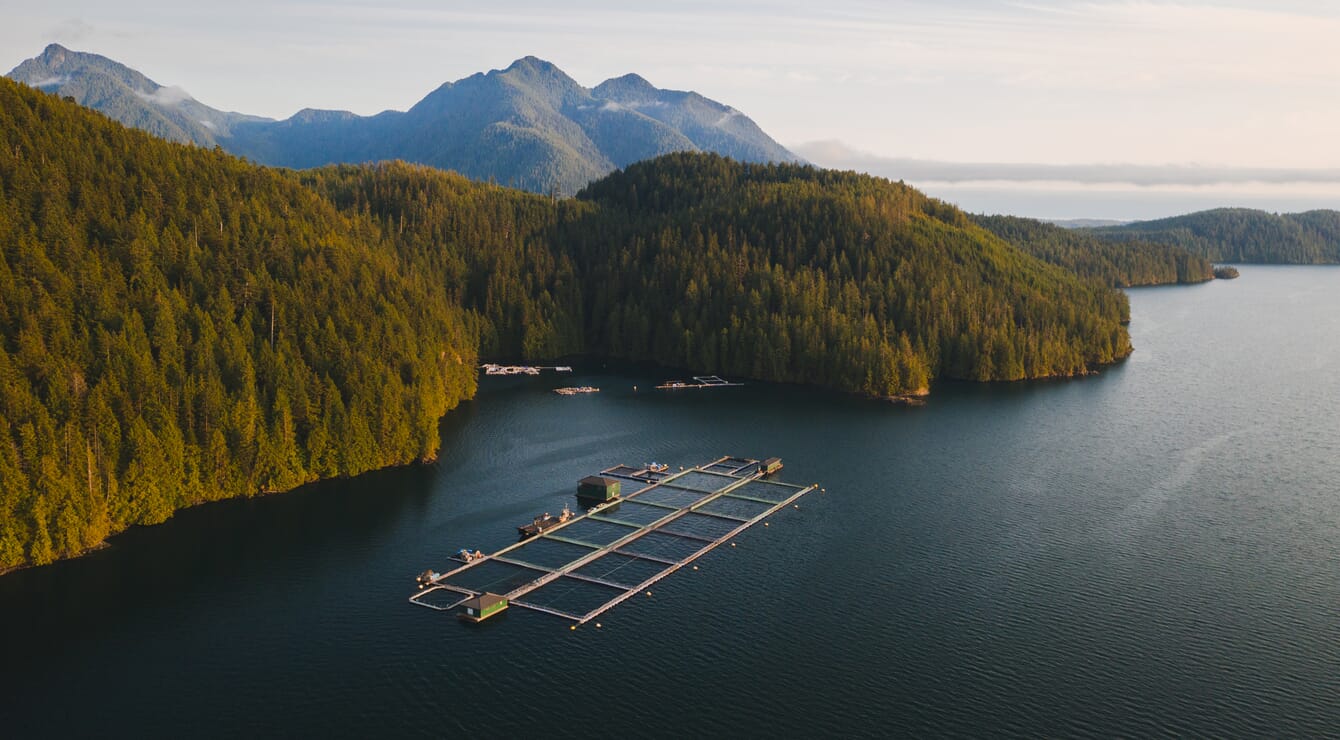
Golden Eagle Sablefish transfer advanced fingerlings from RAS facilities to offshore net-pens for grow-out © Golden Eagle Sablefish
The commercial aquaculture pioneers
Only a handful of producers have had success with sablefish, including Marine Aqua (affiliated with Troutlodge, Inc) in Washington and Hawaii; Hub City Fisheries in Nanaimo, British Columbia and Totem Sea Farm in Jervis Inlet, BC.
Perhaps the most innovative is Golden Eagle Sablefish, who market their product as Gindara Sablefish. Golden Eagle uses RAS facilities (originally developed for coho salmon production) for hatchery operations and transfers advanced fingerlings to offshore net-pens for grow-out. In 2020, Gindara became the first Canadian marine finfish farm to be awarded the Seafood Watch Program’s “Best Choice” rating. Their customers can be found in Japan, the US, Canada, Europe and in several other countries.
I chatted with Terry Brooks, president at Golden Eagle Sablefish, about the business and the fish they raise. He mentioned that the advances in maintaining captive broodstock and optimising conditions during larval rearing have been the two most important accomplishments in terms of making the business successful. According to Brooks, the ability to deliver high quality product on a regular basis has also been a key to economic survival. He pointed out that the farm “has had sales every week since 2007, and many customers in Japan and the US have been with us since day one”. He added that “key advantages of this fish in the marketplace are an inherent high value, with superior shelf life and quality”.
When asked if there was one thing he could change about sablefish, Brooks’ answer was “growth rate”. Golden Eagle already utilises all-female production stocks, and they are currently working with the University of Victoria to advance the use of molecular genetic methods for sex markers and parentage determination. He mentioned that the farm has also worked with several international feed companies over the years, providing valuable insights for all parties involved and giving the hatchery access to “the finest larval nutrition in the world”.
When I asked Brooks to sum up his experience with sablefish, he replied “It’s been an interesting journey”. Here’s hoping the journey continues well into the future.


